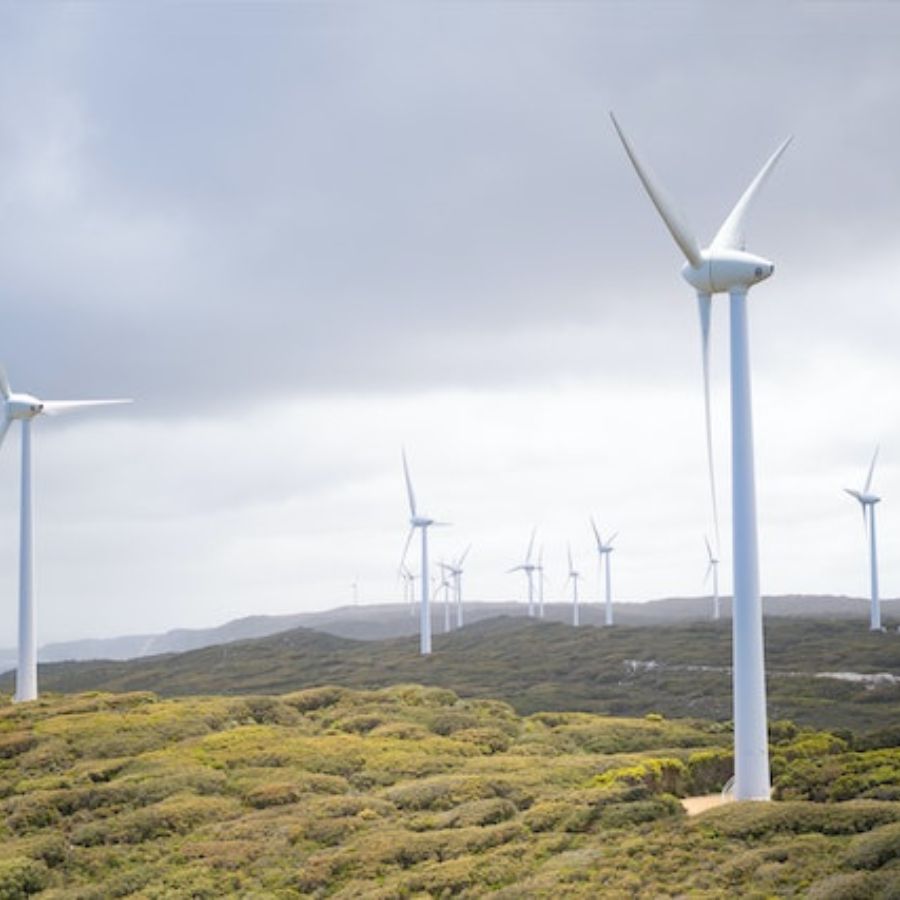Ontario, Canada, has one of the strongest economies in the country and is home to some of the most innovative and environmentally friendly communities in the world. As the world’s energy needs continue to increase, many people are turning to renewable sources such as solar power or wind power to meet those needs. In this article, we will explore the benefits of residential wind turbines in Ontario and the impact they can have on the environment and the economy.
Why Wind Energy?

Wind energy is a renewable energy source that has been there for centuries. Recently, it has become an increasingly popular option for electricity production due to its cost-effectiveness, low environmental impact, and availability. Wind turbines harness the wind’s kinetic energy and convert it into electricity using a wind generator. Unlike fossil fuels, wind energy does not emit harmful pollutants into the air, making it an eco-friendly option for those concerned about the environment.
Ontario is one of the fastest-growing provinces in terms of renewable energy sources, including wind power. The province has set an ambitious goal of generating 50% of its electricity from renewable sources by 2030. One of the main ways that homeowners can help achieve this goal is by installing residential wind turbines. The average wind speed in Ontario is suitable for residential wind turbine installations, and wind turbine installation typically lowers the overall energy costs for the homeowner. In addition to cost savings, wind turbines produce clean energy, reducing the carbon footprint and helping to build a cleaner and more sustainable future.
Understanding Wind Turbine System Performance
The performance of a wind turbine installed in a residential setting depends on several factors to ensure that wind turbines produce electricity effectively. They include wind resources, turbine design, and maintenance. Wind turbines rely on wind energy to generate electricity, and their performance mainly depends on the wind speed at the turbine location. For optimal performance, the turbine design must match the wind resource.
Wind turbines require a minimum wind speed to generate electricity effectively. Hence, the wind resource is critical to ensure that the wind turbine produces sufficient electricity to meet the residential needs. Regular maintenance is essential to ensure the wind turbine operates efficiently and safely. The maintenance schedule should include regular checks of the mechanical components, such as the rotor blades, gearbox, and generator, as well as the electrical components, such as the wiring and control systems. A well-maintained wind turbine can operate for many years, providing renewable energy for the homeowner and reducing their carbon footprint.
Components of Wind Energy Systems
A wind energy system consists of several components to ensure efficient wind turbine performance. They include the wind turbine, tower, generator, inverter, and battery storage system. The wind turbine, which is the most visible component of the system, converts wind energy into mechanical energy that drives the generator. The tower provides support for the turbine and raises it to a height where it can capture more wind energy.
The generator converts mechanical energy into electrical energy that is transmitted to the inverter, which converts it into the appropriate voltage for use in the home. The inverter also plays a crucial role in ensuring that the wind turbine operates efficiently by monitoring and adjusting the turbine’s electrical output to maximize energy production.
Battery storage systems store excess energy generated by the wind turbine for use when the wind is not blowing. It helps to ensure that the energy produced is used efficiently and can be stored for later use. The wind turbine manufacturer typically provides data on the optimal specifications for each component, based on the wind turbine’s design and capacity, to ensure the system operates efficiently and produces maximum energy output.
Approvals for Small Wind Turbine Systems
Small wind turbine systems are subject to approvals and regulations at the local, provincial, and federal levels. In Ontario, homeowners must comply with zoning and building regulations and obtain a building permit before installing a small wind turbine system. The Canadian Wind Energy Association (CanWEA) provides guidelines for the safe and effective installation of small wind turbines, including requirements for site assessments, turbine selection, and installation procedures.
Choosing a Wind Turbine System
When deciding on a wind turbine system, homeowners must consider several factors, including wind resources, turbine size, tower height, and installation costs. The first step is to assess the wind resource on the property. Homeowners can obtain wind data through various sources, including wind resource data published by the government. Analyzing this data can help determine whether the wind resource is adequate for a wind turbine system.
Matching the turbine size and tower height to the wind resource is critical to achieving optimal performance. Oversized or undersized turbines can lead to inefficient energy production and increased maintenance costs. Homeowners should also consider the installation costs and any available incentives or rebates that can help offset the cost of the system.
Selecting a reputable installer who can ensure a safe and effective installation is vital. It is good to seek out experienced installers with a track record of successful installations. Homeowners can research installer qualifications by checking their credentials, reviewing customer feedback, and requesting references.
Benefits of Residential Wind Turbines

Residential wind turbines can provide numerous benefits to homeowners and the wider community. Here are just a few:
Energy Independence
Residential wind turbines allow homeowners to generate electricity, reducing their dependence on the grid. It can lead to significant cost savings over time and increased energy security.
Environmental Benefits
Wind turbines generate clean, renewable energy that does not produce harmful greenhouse gas emissions or other pollutants. Homeowners can reduce their carbon footprint and help combat climate change by generating electricity.
Increased Property Value
Installing a residential wind turbine can increase the value of a property. Many homebuyers are now looking for environmentally friendly features when searching for a new home, and a wind turbine can be an attractive selling point.
Job Creation
The growth of the wind energy industry in Ontario has created numerous jobs in manufacturing, installation, and maintenance. By installing a residential wind turbine, homeowners can help to support this growing industry and create jobs in their local area.
Reliability
Wind turbines can operate in all weather conditions, making them a reliable source of electricity even during power outages. It can be especially essential for homeowners in remote areas or those who rely on electricity for medical equipment or other crucial needs.
Government Support for Residential Wind Turbines
The Ontario government has introduced several initiatives to support the growth of the wind energy industry in the province. The Feed-In-Tariff (FIT) program, for example, provides incentives for homeowners and businesses to generate their electricity from renewable sources such as wind power. Under the program, homeowners who install a residential wind turbine can earn a guaranteed price for the electricity they generate. In addition, they can get a bonus for any excess energy they feed back into the grid.
In addition to financial incentives, the Ontario government has also introduced regulations and standards to ensure the safe and effective installation of residential wind turbines. The Canadian Wind Energy Association (CanWEA) has developed a set of guidelines for the installation and operation of small wind turbines, which provide critical information on issues such as zoning, noise, and safety.
Case Studies – Residential Wind Turbines in Ontario
There are many examples of successful residential wind turbine installations in Ontario. Here are a few case studies:
The Archibald Wind Turbine
The Archibald family of Eastern Ontario installed a residential wind turbine on their property in 2012. The turbine generates approximately 15,000 kWh of electricity yearly, enough to power their home and farm. The family has also installed a geothermal heating system, further reducing their energy costs and carbon footprint.
The Cowie Family Wind Turbine
The Cowie family, who live in Northern Ontario, installed a residential wind turbine on their property in 2014. The turbine generates approximately 5,000 kWh of electricity yearly, which meets about half of its annual electricity needs. The family has also installed solar panels and a wood stove to further reduce energy costs.
The Brazeau Family Wind Turbine
The Brazeau family of Southwestern Ontario installed a residential wind turbine on their property in 2016. The turbine generates approximately 11,000 kWh of electricity yearly, enough to power their home and farm. The family has also installed a solar hot water system and energy-efficient appliances to further reduce their energy costs.
These case studies demonstrate the viability and effectiveness of residential wind turbines in Ontario. By generating their electricity, these families have reduced their dependence on the grid, saved money on energy costs, and contributed to a cleaner environment.
Challenges and Considerations
While there are many benefits to residential wind turbines, there are also some challenges and considerations that homeowners should be aware of. Here are a few:
Location
Wind turbines require a minimum wind speed to generate electricity effectively. Before installing a turbine, homeowners should assess the wind speed and direction on their property to ensure it is suitable for a turbine installation.
Noise
Wind turbines can generate noise, especially when the wind is strong. Choose a turbine with low noise levels and consider the distance from the turbine to the home and neighboring properties.
Cost
While the long-term cost savings of a residential wind turbine can be significant, the initial installation cost can be high. Homeowners should carefully consider the costs and benefits before installing a turbine.
Zoning and Regulations
Residential wind turbines are subject to zoning and other regulations. Homeowners should check with their local government and the CanWEA guidelines before installing a turbine to ensure compliance.
Conclusion
Residential wind turbines offer numerous benefits to homeowners and the community in Ontario. They provide clean, renewable energy that can:
- reduce energy costs
- increase property values
- create jobs
The Ontario government has introduced several initiatives to support the growth of the wind energy industry, including financial incentives and regulations to ensure safe and effective installations. Lastly, while there are some challenges and considerations to be aware of, the success of residential wind turbine installations in Ontario demonstrates their viability and effectiveness as a source of clean energy for the future.

